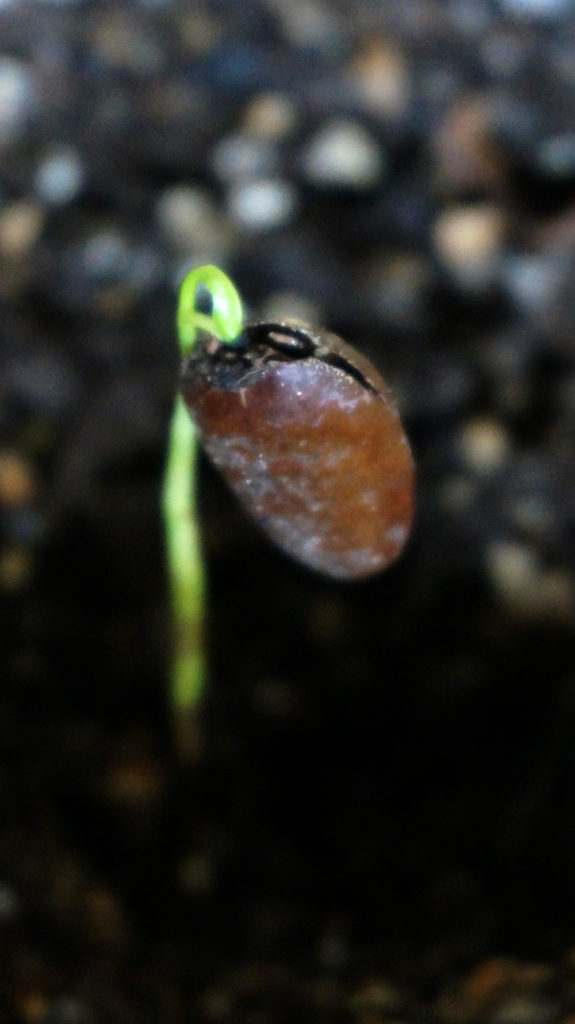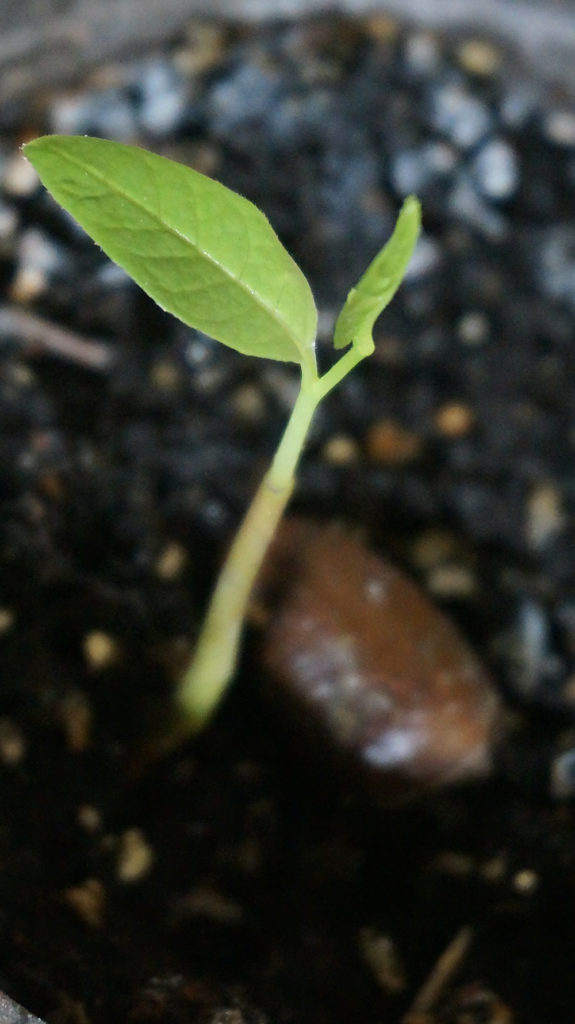Village Gardener – Seeds
by Georgeanne Vyverberg –
“I have great faith in a seed”
— Henry David Thoreau
Nursery and seed catalogs began arriving around the beginning of the Holidays, and while sorely tempted I delayed my gratification for this pleasant yearly ritual. With nearly two feet of snow on the ground and single digit temperatures it was time. I began by sorting them into two piles, one for organically grown and the rest in the other pile. Mostly I buy organically grown seeds or plants despite the fact that they are more expensive. It is worth the extra expense to know that my seeds have been given the proper environment and that they have not been altered genetically. I also try to only purchase open pollinated varieties as I like to save seed and money.
Open pollinated” generally refers to seeds that will “breed true”. When the plants of an open-pollinated variety self-pollinate, or are pollinated by another representative of the same variety, the resulting seeds will produce plants roughly identical to their parents. A hybrid variety on the other hand will produce seeds having many more characteristics and most likely won’t look like your original plant. If you have lots of garden space this can be fun to play with and produce seeds that are best suited to your garden in your neighborhood. It takes about seven generations to produce a new variety. For me I like to experiment with both flowers and vegetables. There is so much to learn about plants. They are so amazing. A neighbor gave me some flower seeds when I was a youngster, and knowing nothing, I simply dug some holes and planted them. By some stroke of luck, some sprouted and I was amazed. It was magic! These little specs of hard grit like things were alive! I’ve been hooked ever since.

So, what exactly IS a seed? Carol Baskin, who teaches at the University of Kentucky likes to tell her students that a “seed is a baby plant in a box with its lunch.” It simply needs the right elements in its environment to sprout. And you might ask what are those elements? Of course, water, light, and warmth are necessary to begin, but the soil plays an important role as well in how well it can continue to grow. The genetic material within the seed is vast. Say you plant a packet of bean seed and they sprout, and you do a good job of caring for your row of beans but notice that one or two plants do better than the others during a droughty hot summer, or a wet season. You can mark these plants and save the seed for the next season and see if they work out better. You have become a plant breeder! After selecting the best plants every year for seven generations you have created a new variety that grows best in the soil of YOUR garden. Since beans can be re sown 2-3 times in a season it really doesn’t take so much time. Now it can take longer for something like a tomato or a pepper’ but it’s worth it. Saving seed is not only money saving, it is saving genetic diversity. Have you ever had the experience of suddenly not finding your favorite tomato or pepper variety? I have. In the mid-90s I was unable to find a tomato called New Yorker, which I had grown for over a decade. I liked it because it produced fruit early in the season, and is known as a determinate variety, meaning it produced flowers and fruit early, but then stopped producing. Although I would plant several varieties, I had tomatoes early before the other non-determinate varieties began producing. When other favorites began disappearing I found out the reason. Large companies began buying up the small seed companies, and their purpose was to sell seeds that would grow anywhere and not just in YOUR backyard. Many of the smaller seed companies grew seed that was locally sustainable, and might not necessarily grow country wide.
They disappeared when this happened. Simply dropped from the catalog of these mega corporations. It’s still happening and on a world-wide scale. I am happy to report that the New Yorker tomato is available again because new small seed companies rediscovered it before it was lost completely. This is becoming more common as people find what is happening to our seed diversity. Since the early 20th century we have lost forever nearly 90% of the food varieties grown then. We

can’t totally blame it on the mega corporations.
It happened when we were lured into the convenience of buying little packets of seeds at the farm store, and figured it was easier than saving seed from year to year. That’s how we are. We seldom think about the consequences. If something saves us time then it’s got to be good…or is it? We felt the same about nuclear energy when it was first discovered, and plastics which are filling our garbage dumps and strangling sea turtles among other things.
We need to be careful in what we embrace, and nothing is as important as what we eat. Seeds comprise 60-70 percent of our food. Take a quick inventory of your pantry and you will see what I mean. Meat is produced from grains and grasses as well. Seeds are important and magical and in many cultures sacred. We need to be mindful of this, and prepared to save our seed diversity. There are many threats to our heritage and food sources.
Among these threats are genetically modified organisms (GMOs), which are mostly owned by big corporations. These are seeds made in a laboratory where bacteria and mutagens or DNA from other species are introduced, some of which, like e-coli, are dangerous to our health. It’s interesting to know that most have not been tested for safety. Also, the companies have fought to keep GMO labeling off products containing them.
Another problem concerns the pollinating insects so vitally important in the natural production of most of the worlds plants. A recent article by Sam Hall, who writes the Bee Lines column for the Owl Light News told how 75% of pollinating insects have disappeared in the past quarter century. I urge you to read it. He tells how just one group of pesticides that contain nicotine are coated on seeds to keep them from rotting, are also killing these pollinating insects.
There is so much to think about when it comes to our food supply. It can be overwhelming, but you can do something about it. Start by becoming educated about GMOs and patents and pesticides, and most importantly start saving seeds. Thousands of backyard gardeners are doing it. Its fun, its addicting really. I have the same strain of garlic that I have been growing out for three decades. Since I moved a few years ago, I have noticed that it doesn’t have the same vitality as it had in my old gardens, except for some, and so I have begun selecting the best of these. In two years there is a definite change as it becomes acclimated to this very different soil.
Now back to those catalogs. Choose wisely and carefully. I want to recommend a book to you which I believe is the best I have read on the multiple aspects of seeds and seed diversity. It’s called The Seed Underground, A growing revolution to save food by Janisse Ray. She is a gifted writer and seed activist. You might find it at your local library, but this is one you will want to keep.
Georgeanne has been fascinated by plants ever since a neighbor gave her some flower seeds when she was very young. The magic of watching them sprout into beautiful flowers has become a lifetime of wonderment. She lives in Honeoye Falls with her canine and feline friends, small flock of chickens and more recently a rabbit, or two.